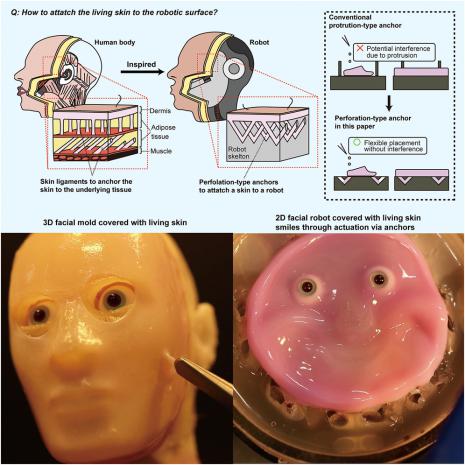
Breaking News
6.5x55 Swedish vs. 6.5 Creedmoor: The New 6.5mm Hotness
Best 7mm PRC Ammo: Hunting and Long-Distance Target Shooting
 Christmas Truce of 1914, World War I - For Sharing, For Peace
Christmas Truce of 1914, World War I - For Sharing, For Peace
Top Tech News
 EngineAI T800: Born to Disrupt! #EngineAI #robotics #newtechnology #newproduct
EngineAI T800: Born to Disrupt! #EngineAI #robotics #newtechnology #newproduct
 This Silicon Anode Breakthrough Could Mark A Turning Point For EV Batteries [Update]
This Silicon Anode Breakthrough Could Mark A Turning Point For EV Batteries [Update]
 Travel gadget promises to dry and iron your clothes – totally hands-free
Travel gadget promises to dry and iron your clothes – totally hands-free
 Perfect Aircrete, Kitchen Ingredients.
Perfect Aircrete, Kitchen Ingredients.
 Futuristic pixel-raising display lets you feel what's onscreen
Futuristic pixel-raising display lets you feel what's onscreen
 Cutting-Edge Facility Generates Pure Water and Hydrogen Fuel from Seawater for Mere Pennies
Cutting-Edge Facility Generates Pure Water and Hydrogen Fuel from Seawater for Mere Pennies
 This tiny dev board is packed with features for ambitious makers
This tiny dev board is packed with features for ambitious makers
 Scientists Discover Gel to Regrow Tooth Enamel
Scientists Discover Gel to Regrow Tooth Enamel
 Vitamin C and Dandelion Root Killing Cancer Cells -- as Former CDC Director Calls for COVID-19...
Vitamin C and Dandelion Root Killing Cancer Cells -- as Former CDC Director Calls for COVID-19...
 Galactic Brain: US firm plans space-based data centers, power grid to challenge China
Galactic Brain: US firm plans space-based data centers, power grid to challenge China
New technique gives robotic faces living human skin

Two years ago, Prof. Shoji Takeuchi and colleagues at the University of Tokyo successfully covered a motorized robotic finger with a bioengineered skin made from live human cells.
It was hoped that this proof-of-concept exercise might pave the way not only for more lifelike android-type robots, but also for bots with self-healing, touch-sensitive coverings. The technology could additionally be used in the testing of cosmetics, and the training of plastic surgeons.
While the skin-covered finger was certainly an impressive achievement, the skin wasn't connected to the underlying digit in any way – it was basically a shrink-to-fit sheath that enveloped the finger. By contrast, natural human skin is connected to the underlying muscle tissue by ligaments.
Among other things, this arrangement allows us to exhibit our various facial expressions. Additionally, by moving along with the underlying tissue, our skin doesn't impede movement by bunching up. For this same reason, it's also less likely to be damaged by getting snagged on external objects.
Scientists have previously attempted to connect bioengineered skin to synthetic surfaces, typically via tiny anchors that protrude up from those surfaces. These pokey anchors detract from the skin's appearance, however, keeping it from looking smooth. They also don't work well on concave surfaces, where they all point in towards the middle.
With such limitations in mind, Takeuchi and his team recently developed a new skin-anchoring system based on tiny V-shaped perforations made in the synthetic surface.
The scientists created a human facial mold that incorporated an array of these perforations, then coated that mold with a gel consisting of collagen and human dermal fibroblasts. The latter are cells which are responsible for producing connective tissue in the skin.
Some of the gel flowed down into the perforations, while the rest stayed on the surface of the mold. After being left to culture for seven days, the gel formed into a covering of human skin that was securely anchored to the mold via the tissue within the perforations.

 The State's Last Stand
The State's Last Stand


